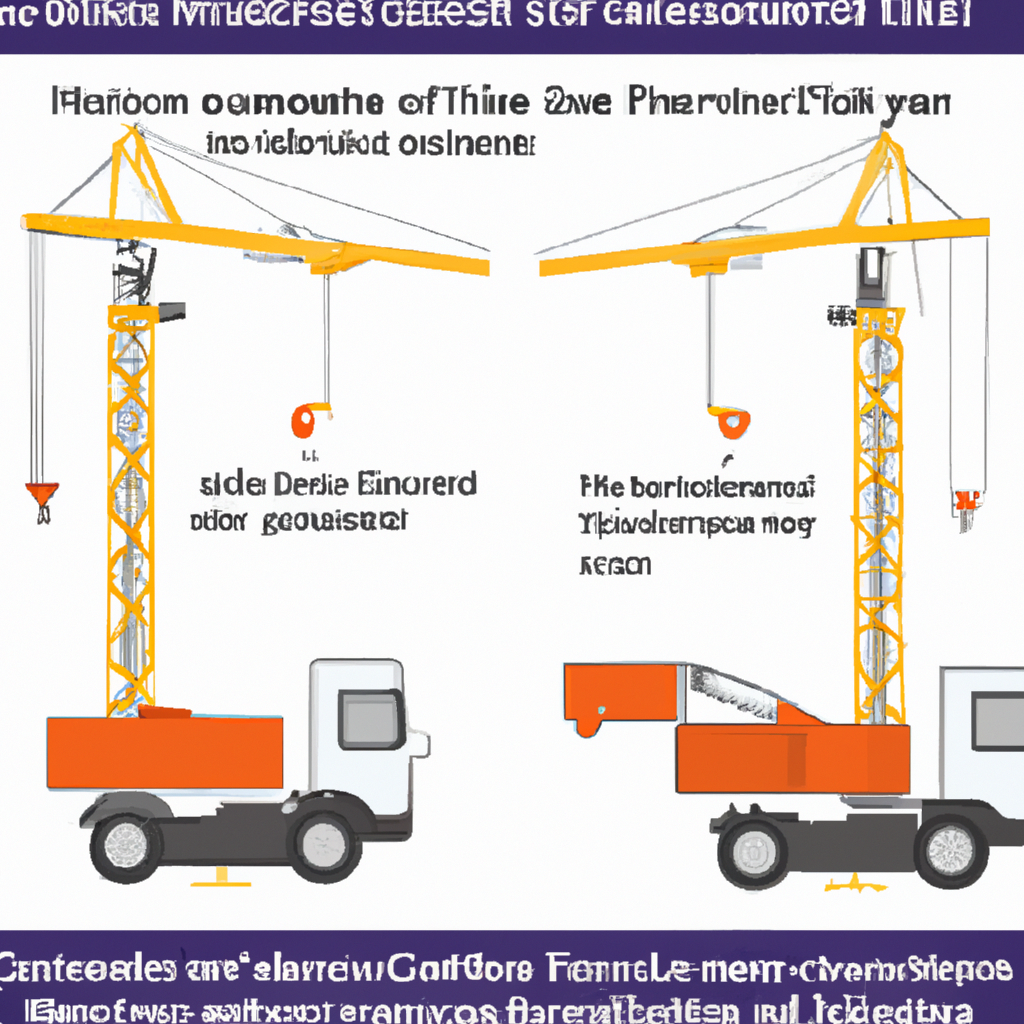Understanding Mobile and Fixed Cranes
In the world of construction and heavy lifting, choosing the right type of crane can be a critical decision. The debate of mobile crane vs fixed crane availability often arises when project managers and engineers assess the requirements of their construction sites. Both types of cranes have unique characteristics, benefits, and limitations pertaining to their availability, mobility, installation, and operational efficiency. This article will delve into the key differences between mobile and fixed cranes, focusing on their availability and other related aspects to help you make an informed decision.
What Are Mobile Cranes?
A mobile crane is a versatile, transportable lifting device equipped with telescopic booms or lattice structures mounted on a mobile platform such as a truck or crawler. Mobile cranes are renowned for their flexibility, quick setup, and ability to be relocated from one site to another with ease. Due to their adaptability, they are widely used in urban construction, infrastructure development, and for short-term lifting tasks.
What Are Fixed Cranes?
A fixed crane, also known as a stationary crane or tower crane, is anchored to a specific location, providing stability and high lifting capacity for extended periods. These cranes are commonly used in high-rise building construction, large-scale industrial projects, and sites where heavy materials must be lifted to significant heights. Their design allows for efficient vertical and horizontal movement within a defined working radius.
Mobile Crane vs Fixed Crane Availability
Availability is a crucial factor when determining which crane type suits your project. Below, we explore several dimensions of availability for both mobile and fixed cranes, including lead times, site readiness, operational uptime, and deployment speed.
1. Deployment Speed and Flexibility
- Mobile Cranes: These cranes can be dispatched and installed on-site quickly, often within hours. Their self-propelled nature allows them to be used on multiple sites within short periods, making them highly available for urgent or short-term projects.
- Fixed Cranes: Fixed cranes require significant planning, foundation work, and assembly. Their setup can take days or even weeks, reducing their immediate availability for fast-paced projects.
2. Site Accessibility and Adaptability
- Mobile Cranes: Capable of navigating rough terrain, confined spaces, and urban environments, mobile cranes offer unmatched site accessibility. This makes them a preferred choice for projects where space constraints or site changes are common.
- Fixed Cranes: Best suited for stable, predictable environments, fixed cranes cannot be easily moved once installed. Their availability is tied to the readiness and layout of the construction site.
3. Lead Times and Equipment Scheduling
- Mobile Cranes: Shorter lead times are a hallmark of mobile cranes. Rental companies often maintain a fleet of mobile cranes, making it easier to secure one on short notice.
- Fixed Cranes: Due to their complexity and the need for site-specific engineering, fixed cranes generally have longer lead times. Their availability can be impacted by manufacturing schedules and the need for specialized operators.
4. Operational Uptime and Maintenance
- Mobile Cranes: Designed for temporary use, mobile cranes can be easily serviced and swapped out if maintenance is required, minimizing downtime and maximizing equipment availability.
- Fixed Cranes: While offering high operational stability, fixed cranes may require site-specific repairs and more extensive maintenance, which can affect their availability during critical project phases.
Key Factors Influencing Crane Availability
In addition to the main comparison, several related search intent keywords (LSI keywords) are crucial for a deeper understanding. These include crane rental options, crane setup time, lifting capacity differences, crane mobility advantages, and project site requirements. Factoring in these elements ensures the most efficient use of resources and keeps your project on schedule.
| Criteria | Mobile Crane | Fixed Crane |
|---|---|---|
| Deployment Speed | Fast (hours to a day) | Slow (days to weeks) |
| Mobility | High (can move between sites) | Low (stationary) |
| Initial Setup | Minimal | Extensive (foundation required) |
| Lead Time | Short | Long |
| Suitability | Short-term, flexible projects | Long-term, high-rise projects |
Pros and Cons: Mobile Crane vs Fixed Crane Availability
Mobile Cranes: Advantages
- Immediate availability due to fast setup and transport
- Versatile for various lifting tasks and environments
- Ideal for multiple or temporary worksites
- Lower initial site preparation cost
Mobile Cranes: Drawbacks
- Lower maximum lifting capacity compared to fixed cranes
- May be less stable for extremely heavy or high lifts
Fixed Cranes: Advantages
- Superior lifting capacity and reach for tall structures
- Stable and efficient for long-term, large-scale projects
- Less disruption from site changes once installed
Fixed Cranes: Drawbacks
- Longer setup and dismantling times
- Limited to a single site throughout the project
- Higher upfront costs and planning requirements
Which Crane Type is Right for Your Project?
When considering mobile crane vs fixed crane availability, assess the following factors:
- Project Duration: Short-term projects benefit from mobile cranes, while long-term, high-rise developments are better served by fixed cranes.
- Site Conditions: Confined or changing sites favor the adaptability of mobile cranes, whereas stable, open sites may justify the investment in a fixed crane.
- Lifting Needs: Assess the required lifting capacity, reach, and frequency of lifts to ensure optimal crane selection.
- Budget and Scheduling: Calculate the total cost of ownership, including setup, maintenance, and potential downtime, to maximize availability and efficiency.
Conclusion
Both mobile cranes and fixed cranes have distinct advantages and limitations in terms of availability. Mobile cranes offer rapid deployment, flexibility, and adaptability for dynamic or short-term projects. In contrast, fixed cranes provide superior lifting capabilities and operational stability for large-scale, long-term construction. Understanding the differences in crane availability and related factors ensures that your lifting solutions align perfectly with your project’s unique requirements.
